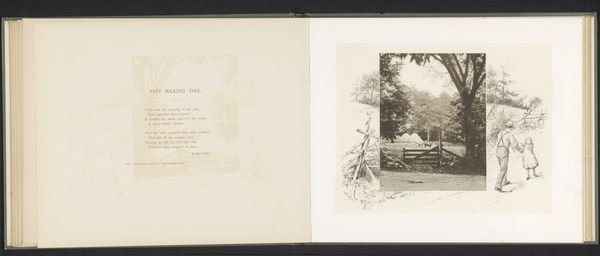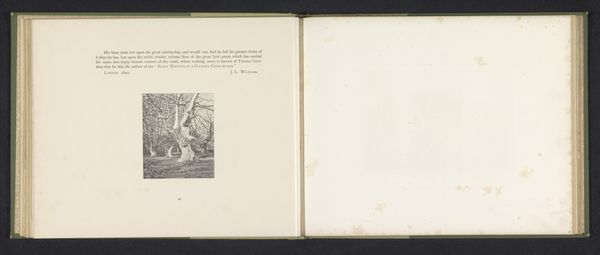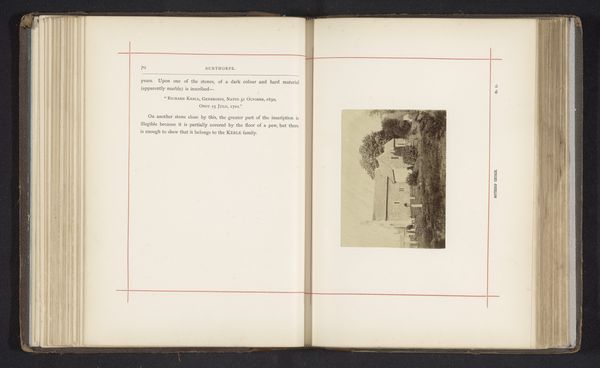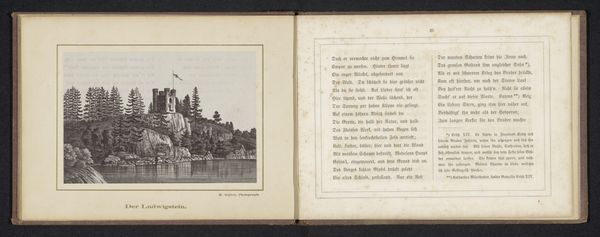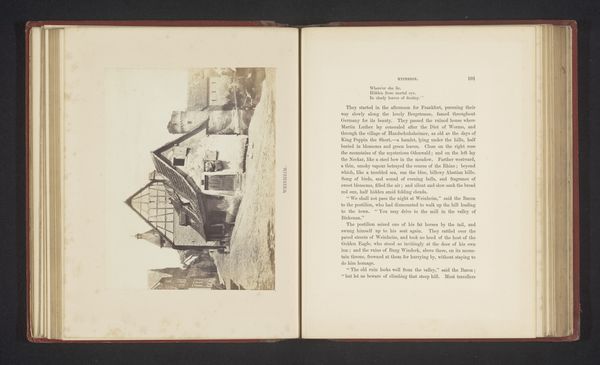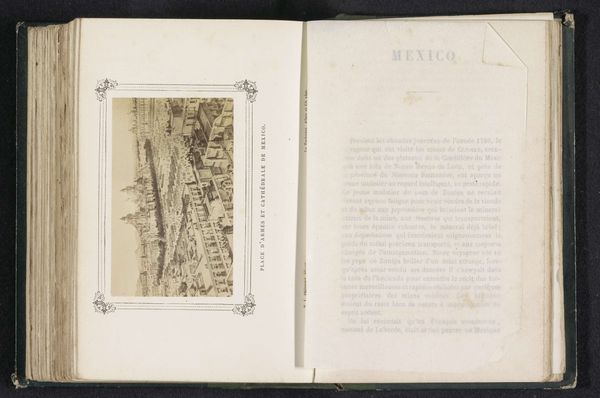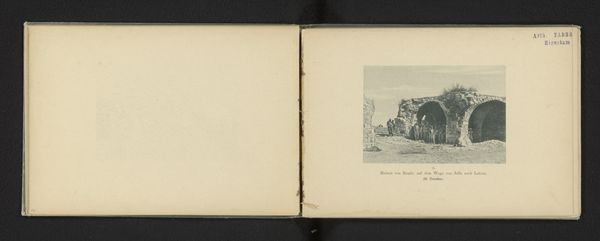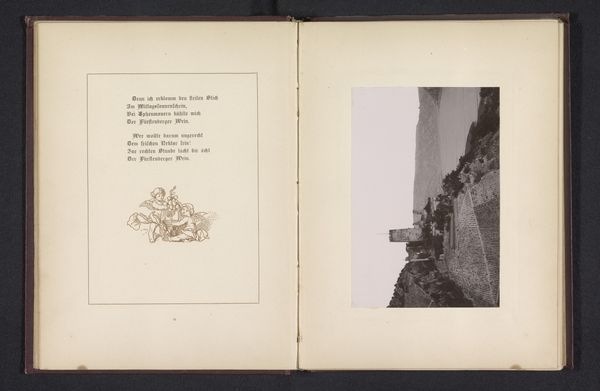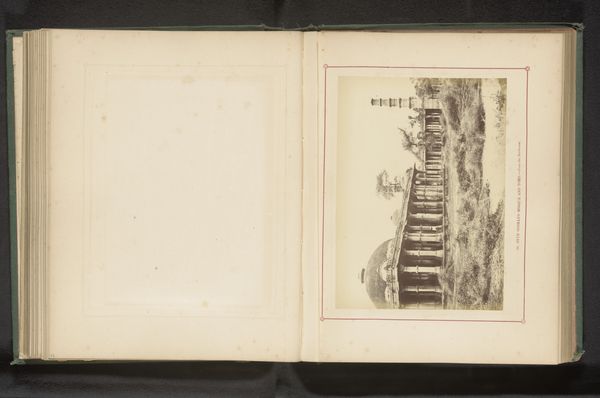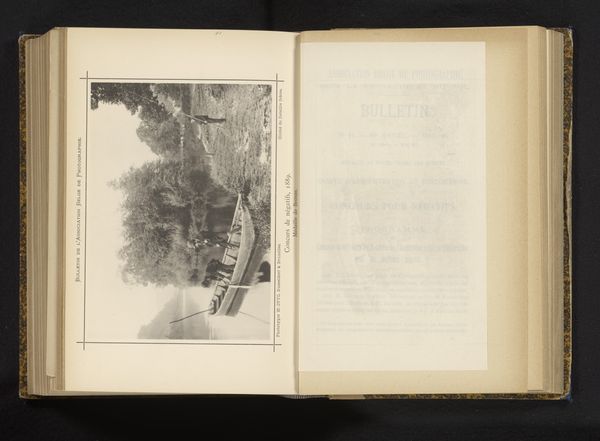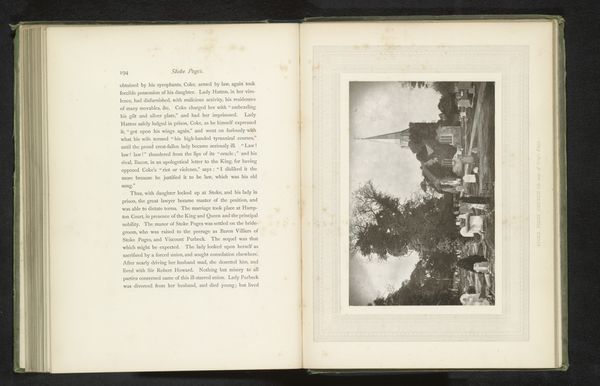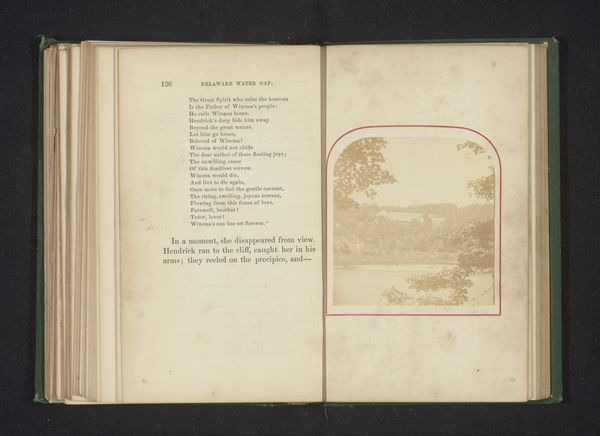
Fotoreproductie van een prent van de obelisk voor de gebroeders Broglio in het park Monrepos in Vyborg before 1875
0:00
0:00
print, photography
#
aged paper
#
neoclassicism
# print
#
landscape
#
photography
#
history-painting
#
historical font
Dimensions: height 141 mm, width 97 mm
Copyright: Rijks Museum: Open Domain
Curator: This striking photographic print captures the obelisk erected for the Broglio brothers in Monrepos Park, Vyborg, sometime before 1875. It's credited to M. Seifert, a name now perhaps only whispered by the stones of history. Editor: My first impression is… solemn. The stark obelisk against the landscape. It’s quite arresting. The very texture of the paper suggests stories untold. Curator: The obelisk form, a classical symbol of memory and remembrance, certainly lends a formal, almost stoic air. Consider the Broglio brothers themselves. They were likely figures of local significance, honored within this designed landscape – a space reflecting larger socio-political narratives of the time. The use of photography itself highlights the growing trend of memorializing public figures in accessible visual formats. Editor: Do you think the rigidity of the monument conflicts with the soft rendering created through photography, which softens edges, and allows a gentle fading of color? Almost as though reality wants to temper the statement made by stone. The image makes me think of how memories themselves shift and transform. Curator: It's interesting you mention that, because, paradoxically, early photography aspired to the objective and historical quality of marble, but was, instead, inevitably marked with chemical and optical limitations, causing unexpected interpretive gaps and unintended emotions. It would have reflected broader class structures since access to commissioning a print was limited, indicating social status and connection to power. Editor: Indeed. The historical font on the facing page adds a distinct flavor – I am drawn into a dialogue across time. It whispers stories rather than shouting them, the contrast between the precise lines of the obelisk and the somewhat gothic text. It really emphasizes the transience of everything, even stone. Curator: It gives weight to the setting itself, reminding us that Monrepos Park was deliberately crafted. As a whole piece, there is clear communication between nature, society, and family history, the artist is almost performing landscape. Editor: It’s funny. What seemed at first glance merely solemn has, through our discussion, become quite profound. It feels deeply woven into the texture of place, memory, and class. Curator: Exactly. By teasing apart these threads, we see the photograph not just as a historical record but as an entry point into a complex, bygone era, prompting questions rather than offering simple answers.
Comments
No comments
Be the first to comment and join the conversation on the ultimate creative platform.
